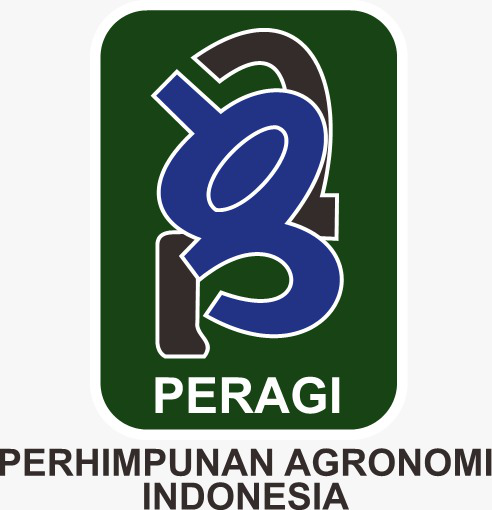Strategy to increase the growth of sweet banana varieties of chili (Capsicum sp) using Gamma Ray Radiation
Abstract
Chili (Capsicum sp) is a herbaceous plant from the eggplant family and is thought to originate from Mexico, Central America, and the Andes region in South America. This research was carried out from November 2023 to May 2024. Sweet Banana Variety Chili Seeds were sent to the Isotope Application Center and Radiation (PAIR), National Nuclear Energy Agency (BATAN) Jl. Lebak Bulus Raya No.49 Cilandak-South Jakarta. Irradiated seeds were planted in the Green House of Labuhanbatu University, Labuhanbatu Regency, North Sumatra. The design used was a non-factorial completely randomized design (CRD) with 5 replications. The experiment used a single factor, namely gamma rays, on sweet banana variety chili seeds with 4 treatment levels: Control (0 Gy), 100 Gy, 200 Gy, 300 Gy. In this study, 20 plant units were observed. Based on the results of observations of the growth of sweet banana variety chili seedlings, seedling growth was different in each treatment, and most of the seedlings were only able to survive at an irradiation level of 100 Gy. The results of the analysis of variance showed that the gamma-ray radiation factor was significantly different from the number of leaves (strands) in the 2nd week after planting, but was not significantly different 4 weeks after planting. The results of the analysis of variance showed that the gamma-ray radiation factor was significantly different 2 weeks after planting, a further DMRT test was carried out at a level of 5%.Downloads
References
Asmal, A., Nurvianthi, RY, & Jehaman, T. (2023). Analysis of Vitamin C Content in Cayenne Pepper (Capsicum fructuscens L.) Iodimetrically. Greater Luwu Health Journal, 9 (2), 44–50.
Chindy Maelani Devi, & Sandi Nasrudin Wibowo. (2022). Counseling and Utilization of Crooked Land for Cultivating Cayenne Pepper Plants in Cipinang Village. PaKMas: Journal of Community Service, 2 (2), 291–296. https://doi.org/10.54259/pakmas.v2i2.1185
Lagiman, & Supriyanta, B. (2021). Morphological Characterization and Breeding of Chili Plants.
Made, N., Sari, P., Sutapa, GN, & Gunawan, AAN (2020). Utilization of Gamma Co-60 Radiation for Chili Plant (Capsicum annuum L.) Breeding using a Physical Mutagen Method Utilization of Gamma Co-60 Radiation for Chili Plant (Capsicum annuum L.) Breeding by Using a Physical Mutagen Method . 21 (2), 47–52.
Nuraeni, N., Hernawati, H., Rani, SRA, L, MS, & Putri, AA (2023). Growth of Soybean Plants (Glycine Max L.) Results of Cesium-137 Gamma Ray Radiation. Online Journal of Physics, 8 (3), 51–57. https://doi.org/10.22437/jop.v8i3.23715
Sa'diyah, N., Fitri, A., Rugayah, R., & Karyanto, A. (2020). Correlation and Cross Analysis Between Branching and Production of Red Chili (Capsicum Annuuml.) Results of Gamma Ray Irradiation. Journal of Tropical Agrotech, 8 (1), 169. https://doi.org/10.23960/jat.v8i1.3683
Sholihah, SM, Banu, LS, Nuraini, A., & Piguno, PA (2020). Comparative Study of Farming Business Analysis and Productivity of Cayenne Pepper Plants in Polybags and in Yard Land. Respati Scientific Journal, 11 (1), 13–23. https://doi.org/10.52643/jir.v11i1.844
Syawaluddin, SP, Imelda, IS, & Hery Solat. (2022). Analysis of Rainfall as an Agroclimatological Element on Production and Determining the Planting Season of Red Chili (Capsicum Annum L.) in South Tapanuli Regency. Formosa Journal of Multidisciplinary Research, 1 (1), 111–126. https://doi.org/10.55927/fjmr.v1i1.420
Tefa, A. (2017). Viability and Vigor Test of Rice Seeds (Oryza sativa L.) during Storage at Different Water Content Levels. Sandalwood Savanna, 2 (03), 48–50. https://doi.org/10.32938/sc.v2i03.210
Vazilla, D., Nura, & Halimursyadah. (2023). The effect of gamma-ray irradiation on seed viability and vigor as well as performance in the vegetative phase of local Aceh chili (Capsicum annuum L.) plants. Agricultural Student Scientific Journal, 8 (2), 119–128. www.jim.unsyiah.ac.id/JFP
Copyright (c) 2024 Danang Aidil Riwanda, Siti Hartati Yusida Saragih, Dini Hariyati Adam, Ika Ayu Putri Septyani

This work is licensed under a Creative Commons Attribution 4.0 International License.
Authors who publish with Jurnal Agronomi Tanaman Tropika (JUATIKA) agree to the following terms:
Authors retain copyright and grant the Jurnal Agronomi Tanaman Tropika (JUATIKA) right of first publication with the work simultaneously licensed under a Creative Commons Attribution License (CC BY 4.0) that allows others to share (copy and redistribute the material in any medium or format) and adapt (remix, transform, and build upon the material for any purpose, even commercially) with an acknowledgment of the work's authorship and initial publication in Jurnal Agronomi Tanaman Tropika (JUATIKA).
Authors are able to enter into separate, additional contractual arrangements for the non-exclusive distribution of the journal's published version of the work (e.g., post it to an institutional repository or publish it in a book), with an acknowledgment of its initial publication in Jurnal Agronomi Tanaman Tropika (JUATIKA). Authors are permitted and encouraged to post their work online (e.g., in institutional repositories or on their website) prior to and during the submission process, as it can lead to productive exchanges, as well as earlier and greater citation of published work.







 More Information
More Information



